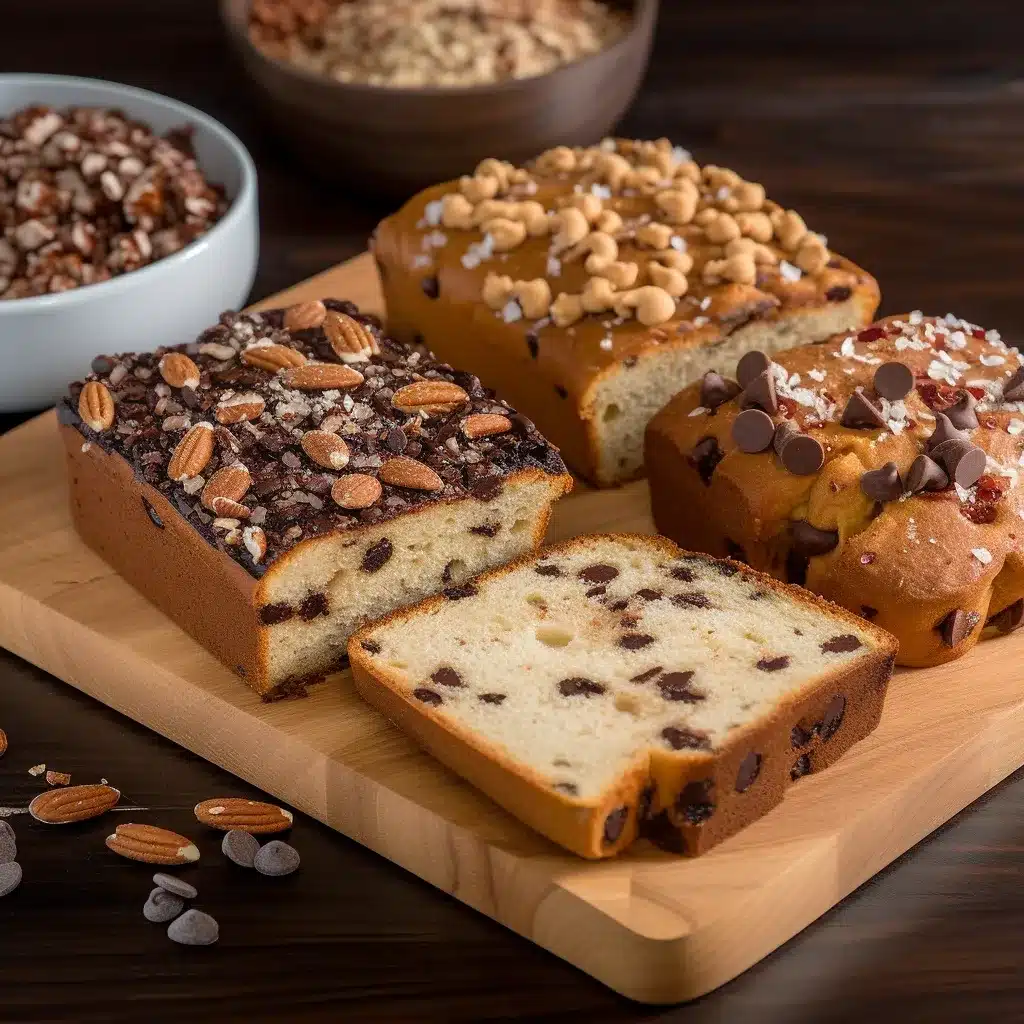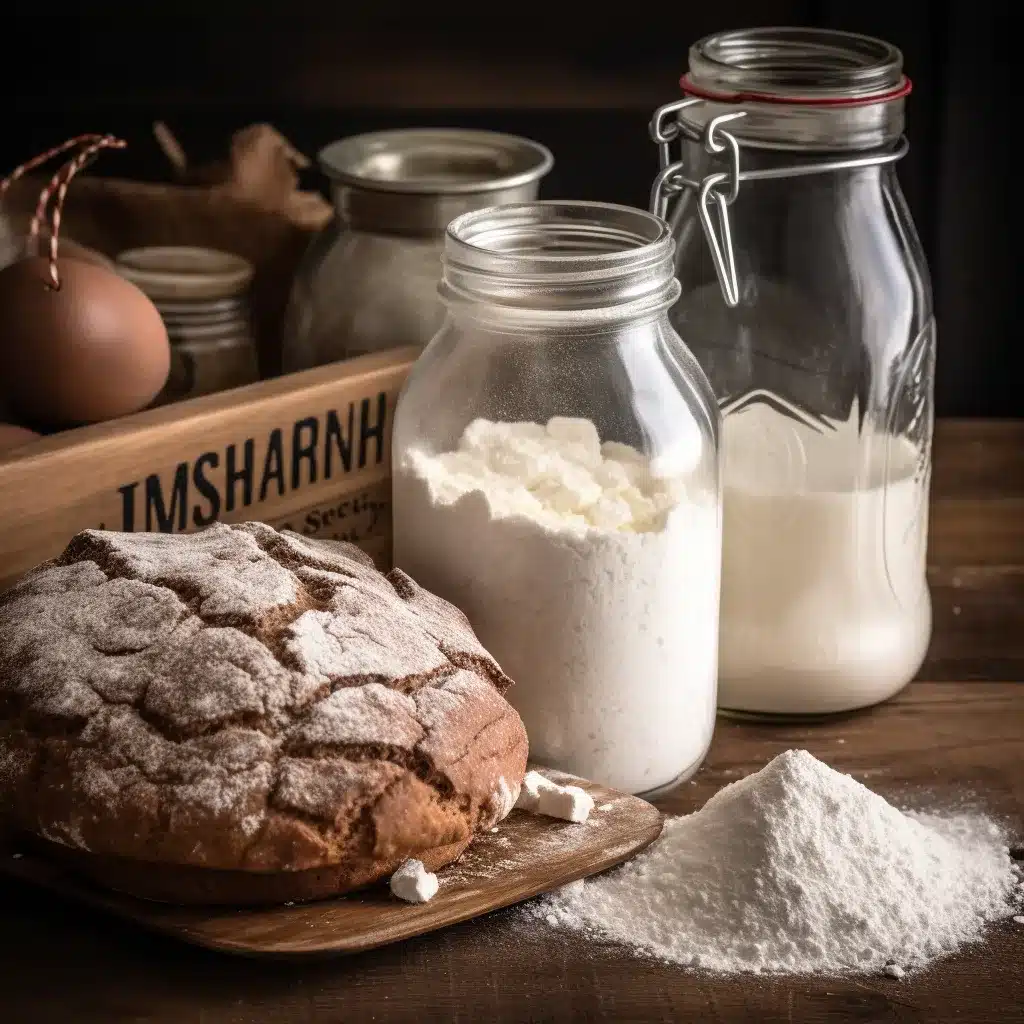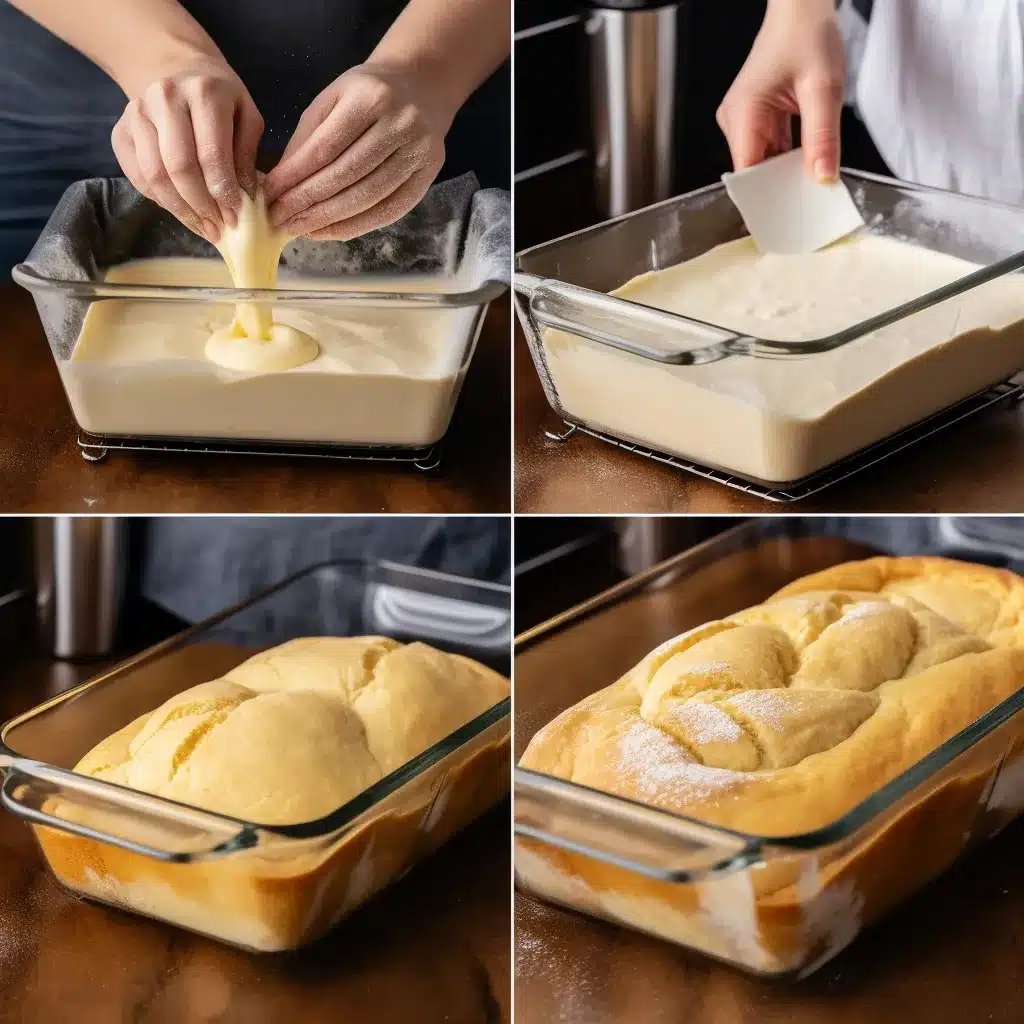Why Can’t You Use Metal with Amish Friendship Bread?
Amish Friendship Bread is more than just a recipe—it’s a tradition. Passed down through generations, this sweet, moist bread is a symbol of community and sharing. But if you’ve ever tried making it, you might have noticed one unusual rule: no metal allowed. Why is that? What’s the big deal about using metal with Amish Friendship Bread?
In this article, we’ll uncover the reasons behind this unique restriction. From the science of fermentation to the cultural roots of the recipe, we’ll break it all down. You’ll also learn how to make the perfect loaf, avoid common mistakes, and even share the tradition with friends. Whether you’re a seasoned baker or a curious beginner, this guide has everything you need to know about why you can’t use metal with Amish Friendship Bread.
Table of Contents
Introduction to Amish Friendship Bread
What is Amish Friendship Bread?
Amish Friendship Bread is a sweet, cake-like bread made from a fermented starter. The starter is a mix of flour, sugar, milk, and yeast that grows over time. It’s called “friendship” bread because the starter is often shared with friends and family. This tradition creates a sense of connection and community.
The bread itself is soft, moist, and slightly tangy. It’s often flavored with cinnamon, vanilla, or nuts. But what makes it truly special is the process. Unlike regular bread, Amish Friendship Bread requires patience and care. You have to tend to the starter for several days before baking.

The Role of Ingredients in Amish Friendship Bread
Every ingredient in Amish Friendship Bread has a purpose. Flour provides structure, sugar feeds the yeast, and milk keeps the dough moist. The starter, however, is the star of the show. It’s what makes the bread rise and gives it that unique flavor.
But here’s the catch: the starter is delicate. It can be easily affected by outside factors, including the tools you use. That’s where the no metal rule comes in.
Why Can’t You Use Metal with Amish Friendship Bread?
If you’ve ever wondered why you can’t use metal with Amish Friendship Bread, you’re not alone. The answer lies in the chemistry of the starter. Metal can react with the ingredients, especially the acidic components of the starter. This reaction can slow down fermentation or even kill the yeast.
Additionally, metal bowls and utensils can retain heat, which might harm the starter. Glass, plastic, or wooden tools are safer choices because they don’t interfere with the process.
In the next section, we’ll dive deeper into the science behind this rule. You’ll learn how metal affects the starter and why non-metal tools are essential for success.
The Science Behind Avoiding Metal
How Metal Reacts with Ingredients
When it comes to why you can’t use metal with Amish Friendship Bread, science plays a big role. The starter is a living thing, full of yeast and bacteria. These tiny organisms are sensitive to their environment. Metal, especially reactive types like aluminum or copper, can interfere with their work.
For example, metal can react with the acids in the starter. This reaction can change the pH balance, making it harder for the yeast to thrive. As a result, the bread might not rise properly. In some cases, the starter could even spoil.
Another issue is heat. Metal conducts heat faster than glass or plastic. If you use a metal bowl, the temperature of the starter might fluctuate. This can stress the yeast and slow down fermentation.
Metal vs. Non-Metal Tools in Baking
So, what should you use instead? Glass, plastic, and wooden tools are the best choices. These materials don’t react with the starter, so they won’t mess up the fermentation process.
Glass bowls are great because they’re easy to clean and don’t retain odors. Plastic is lightweight and convenient, but make sure it’s food-safe. Wooden spoons are perfect for mixing because they’re gentle on the starter.
Using the right tools isn’t just about avoiding metal. It’s also about creating the best environment for your starter to grow. After all, a happy starter means delicious bread.
Common Mistakes When Using Metal
Even experienced bakers can slip up when it comes to why you can’t use metal with Amish Friendship Bread. One common mistake is using a metal whisk to mix the starter. While it might seem harmless, the metal can introduce tiny particles that react with the ingredients.
Another mistake is storing the starter in a metal container. Over time, the metal can corrode, especially if the starter is acidic. This not only ruins the starter but can also be unsafe.
To avoid these issues, always double-check your tools before starting. If you’re not sure whether something is safe, stick to glass, plastic, or wood.
Ingredients and Their Roles
Key Ingredients for Amish Friendship Bread
Making Amish Friendship Bread is all about the ingredients. Each one has a specific job, and together, they create the perfect loaf. Here’s a breakdown of the key ingredients and their roles:

| Ingredient | Purpose | Alternative Options |
|---|---|---|
| Flour | Provides structure and texture | Gluten-free flour |
| Sugar | Feeds the yeast, adds sweetness | Honey or maple syrup |
| Milk | Moistens and activates the starter | Non-dairy milk |
| Starter | Ferments and leavens the bread | Sourdough starter |
Why Ingredients Matter
Every ingredient in Amish Friendship Bread plays a crucial role. For instance, flour gives the bread its structure. Without enough flour, the bread would be too dense. Sugar, on the other hand, feeds the yeast and adds a touch of sweetness.
Milk is another important ingredient. It keeps the dough moist and helps activate the starter. If you’re lactose intolerant, you can use non-dairy milk like almond or oat milk.
The starter, of course, is the heart of the recipe. It’s what makes the bread rise and gives it that unique flavor. Without a healthy starter, your bread won’t turn out right.
Tips for Substituting Ingredients
Sometimes, you might need to swap out an ingredient. Maybe you’re out of milk, or you want to make a gluten-free version. The good news is, Amish Friendship Bread is pretty flexible.
For example, if you don’t have regular flour, you can use gluten-free flour. Just keep in mind that the texture might be slightly different. If you’re out of sugar, honey or maple syrup can work as a substitute.
The key is to experiment and find what works best for you. Just remember to avoid metal tools, no matter what ingredients you use.
Step-by-Step Guide to Making Amish Friendship Bread
Preparing the Starter
The first step in making Amish Friendship Bread is preparing the starter. This is where the magic begins. To start, mix flour, sugar, and milk in a non-metal bowl. Cover it loosely with a cloth and let it sit at room temperature. Over the next few days, you’ll need to feed the starter by adding more flour, sugar, and milk.
Remember, why you can’t use metal with Amish Friendship Bread is crucial here. Metal can react with the starter and ruin the fermentation process. Stick to glass or plastic bowls and wooden spoons for mixing.
Mixing and Baking the Bread
Once your starter is ready, it’s time to make the bread. First, combine the starter with flour, sugar, eggs, and oil in a large bowl. Mix everything until it’s smooth. Then, add any extra ingredients like cinnamon, nuts, or vanilla for flavor.
Next, pour the batter into greased loaf pans. Bake at 325°F for about an hour, or until the top is golden brown. Let the bread cool before slicing.
Storing and Sharing Amish Friendship Bread
After baking, you’ll likely have some starter left over. This is where the tradition of sharing comes in. Divide the starter into portions and give them to friends or family. Include a copy of the recipe so they can make their own bread.
If you’re not ready to share, you can store the starter in the fridge. Just make sure to keep it in a non-metal container. When you’re ready to bake again, take it out and let it come to room temperature before using.

For more delicious recipes, check out our Amish Cinnamon Bread recipe for a similar treat!
Common Questions About Amish Friendship Bread
Why Can’t You Use Metal with Amish Friendship Bread?
One of the most common questions is why you can’t use metal with Amish Friendship Bread. As we’ve discussed, metal can react with the starter and interfere with fermentation. This can lead to poor results, like bread that doesn’t rise or has an off taste.
Another reason is heat conduction. Metal bowls can get too hot or too cold, which can stress the yeast. Glass or plastic bowls are much safer because they maintain a steady temperature.
Can You Use Metal After Baking?
Once the bread is baked, metal is no longer a problem. You can use metal knives to slice the bread or store it in a metal container. The restriction only applies to the preparation and fermentation stages.
How Long Does the Starter Last?
A well-maintained starter can last for weeks or even months. If you keep it in the fridge, it will stay fresh for about two weeks. Just remember to feed it regularly with flour, sugar, and milk.
If you notice a strange smell or color, the starter might have gone bad. In that case, it’s best to start over with a new batch.
FAQs About Amish Friendship Bread
Can I Use Metal Bowls for Amish Friendship Bread?
No, you should avoid using metal bowls when making Amish Friendship Bread. As we’ve explained, metal can react with the starter and disrupt the fermentation process. Stick to glass, plastic, or wooden tools to keep your starter healthy.
What Can I Use Instead of Metal?
If you’re wondering what to use instead of metal, glass or plastic bowls are your best bet. They’re safe, easy to clean, and won’t interfere with the starter. Wooden spoons are also great for mixing because they’re gentle and non-reactive.
Why Does the Starter Smell Sour?
A sour smell is completely normal for an Amish Friendship Bread starter. It’s a sign that the yeast and bacteria are doing their job. However, if the smell becomes unpleasant or foul, it might mean the starter has gone bad.
Can I Freeze the Starter?
Yes, you can freeze the starter if you’re not ready to use it. Freezing slows down the fermentation process, so the starter will stay fresh for months. When you’re ready to bake, just thaw it at room temperature and feed it with flour, sugar, and milk.
Tips for Perfect Amish Friendship Bread
Avoiding Common Mistakes
Making Amish Friendship Bread can be tricky, especially if you’re new to baking. One common mistake is over-mixing the batter. This can make the bread tough instead of soft and fluffy. To avoid this, mix the ingredients just until they’re combined.
Another mistake is using metal tools. As we’ve discussed, why you can’t use metal with Amish Friendship Bread is a key rule. Always double-check your tools before starting.
Creative Variations of Amish Friendship Bread
If you want to mix things up, try adding different flavors to your bread. For example, you can stir in chocolate chips, dried fruit, or nuts. You can also experiment with spices like cinnamon, nutmeg, or cardamom.
For a healthier twist, use whole wheat flour or reduce the sugar. You can even make a gluten-free version by using gluten-free flour. The possibilities are endless!
Sharing the Tradition
One of the best things about Amish Friendship Bread is sharing it with others. When you pass on the starter, you’re not just giving someone a recipe—you’re sharing a piece of tradition.
Include a copy of the recipe and a few tips for success. For example, remind them why you can’t use metal with Amish Friendship Bread. This way, they’ll be able to enjoy the bread just as much as you do.
Conclusion
Why Amish Friendship Bread is Special
Amish Friendship Bread is more than just a recipe—it’s a tradition that brings people together. From its sweet, moist texture to its rich history, this bread has a unique charm. But what makes it truly special is the process. Tending to the starter, sharing it with friends, and baking the bread creates a sense of connection and community.
Final Thoughts on Why Can’t You Use Metal with Amish Friendship Bread
As we’ve explored, why you can’t use metal with Amish Friendship Bread is a key part of the recipe. Metal can react with the starter, disrupt fermentation, and even ruin the bread. By using glass, plastic, or wooden tools, you create the perfect environment for your starter to thrive.
So, whether you’re a seasoned baker or a beginner, give Amish Friendship Bread a try. Follow the steps, avoid metal, and enjoy the process. And don’t forget to share the tradition with others. After all, that’s what friendship bread is all about.
